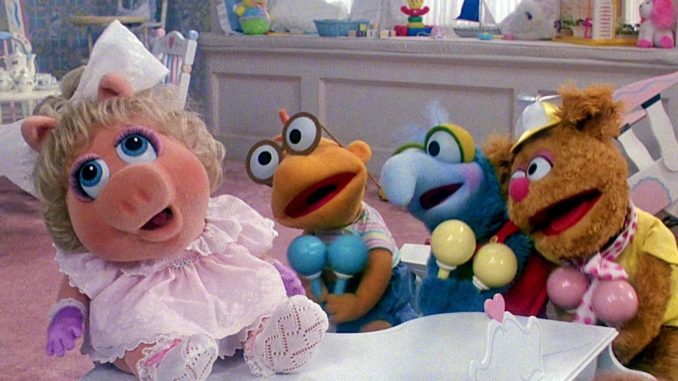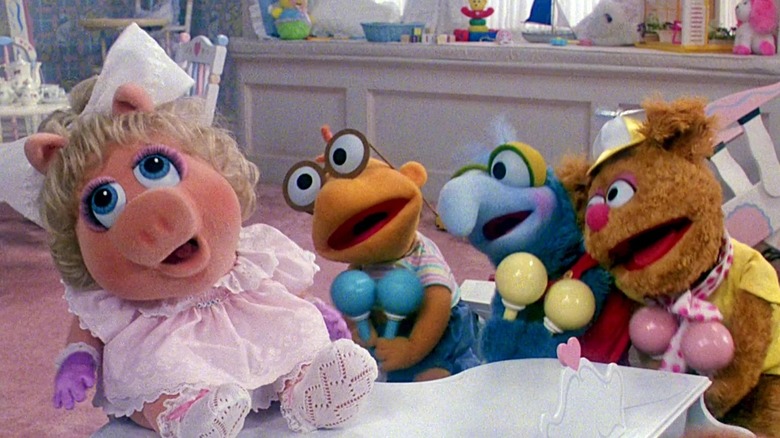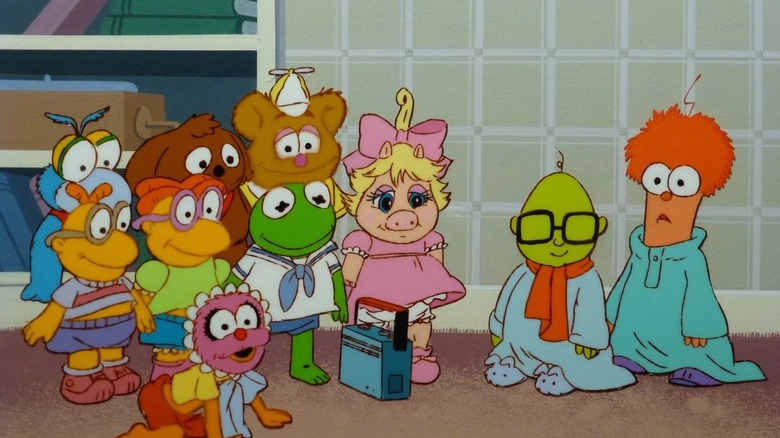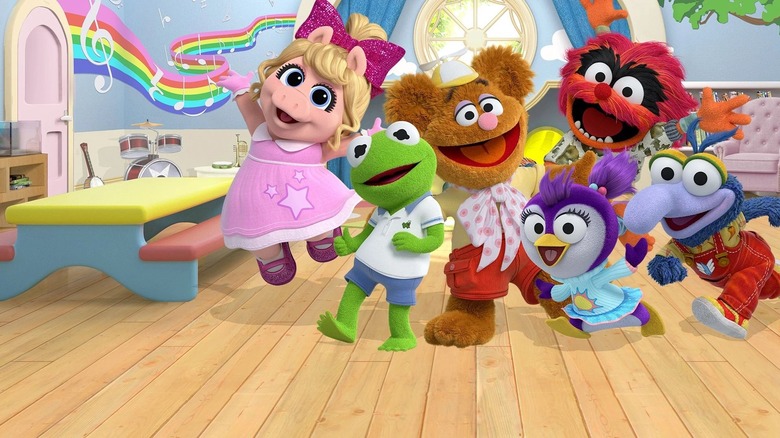
For people who didn’t live through the era, it’s a bit hard to quantify just how huge the Muppets were between 1975 and 1985. For five seasons, they were the stars of the beloved and wildly popular syndicated series “The Muppet Show,” rubbing shoulders with celebrities like Liza Minnelli, Sylvester Stallone, and Mark Hamill. (Hamill’s episode of “The Muppet Show” is pretty notable, bringing the worlds of the Muppets and Lucasfilm even closer together.) During that show’s run, Kermit the Frog, Miss Piggy, and Fozzie Bear also made the leap to the big screen with the absolute, stone-cold classic 1979 film “The Muppet Movie,” which only proved how talented they were while giving the world one of the most instantly iconic songs in “Rainbow Connection.” While “The Muppet Show” ended its run in 1981, the Muppets would continue making successful films, such as that year’s “The Great Muppet Caper” as well as the end of the would-be trilogy of sorts, “The Muppets Take Manhattan.” This 1984 musical comedy is set in the Big Apple and is a riff on old-fashioned MGM musicals in which a group of young hoofers decide to put on a show.
But the one show that the film managed to set up was something for an even younger part of the all-ages audiences that flocked to Muppet movies. In one key scene of the film, we get to see what it would be like if everyone from Kermit to Piggy to Scooter was a baby, all living in the same nursery together. Whatever your opinion of the scene and its accompanying song, it was designed to help set up a spin-off show that would start airing later that fall on CBS. Yes, folks, this movie is what gave us “Muppet Babies.”
The Muppets singing together as babies was meant to set up the long-running spinoff show
“The Muppets Take Manhattan” ends up focusing on how the many beloved characters handle being on their own. The film opens with the excellent “Together Again,” performed by a large group of felt characters as part of a college show that they want to bring to the Great White Way. But when Broadway producers express negative interest in the show, Kermit and the gang end up going their separate ways to limited success. At one key point, Kermit and Piggy take a carriage ride through Central Park as Piggy imagines what it would have been like if the two of them and all their friends had known each other as babies. That leads to a fantasy sequence anchored by the song “I’m Gonna Always Love You,” a bouncy and fast-paced number led by Piggy, as much about her love for Kermit as it is about how all of the Muppets will always have a special bond for each other. On its own, it’s a sweet sentiment and an equally sweet song. (Your mileage may vary, but the image of live-action Muppet babies is … honestly very odd.)
When the film was released in the summer of 1984, it may not have been obvious, but plans were in the works to keep this idea going in animated form. It’s not that everyone from the Muppets was on board with the idea, initially proposed by Jim Henson himself. According to an interview with the creative director of the Jim Henson Company Michael Frith, the film’s director and co-writer, Frank Oz (who was also a longtime Muppet performer, of course), was reportedly not a fan, but Henson was already working to incorporate the Muppet babies idea into everything from a music video for the song to “Muppet Babies” itself.
That animated show was approved by CBS a few months before the film was released, ensuring that it would be on the air in the fall of 1984. Though Henson was reportedly wary of the show going through the Saturday-morning cartoon treatment (with potentially lower budgets and quality), he wound up partnering with Marvel Productions, a now-defunct arm of what was once Marvel that closed up in the early 1990s. The show was put into production soon after, and now, we have more than 100 episodes of the original “Muppet Babies,” featuring a slew of voice actors in place of Henson, Oz, and the rest. (Among those actors? Dave Coulier of “Full House” and stand-up comedian Howie Mandel.)
Muppet Babies had enough of an impact to inspire a modern remake from Disney
What now seems almost maddeningly simple — figure out a way to extend a recognizable piece of intellectual property by giving us a different generation of characters — was in some ways spearheaded by “Muppet Babies.” First of all, there was a bevy of new takes on animated characters that were just “what if these names, but younger?” that started sprouting up after the success of “Muppet Babies.” A lot of characters from the Hanna-Barbera stable of animation, such as the Flintstones, Scooby-Doo, and Tom and Jerry, all got the youthful treatment, and one of the staples of Millennial-era kiddie entertainment was “Tiny Toon Adventures,” which didn’t go quite as far as making Bugs Bunny and Daffy Duck young, but gave us young takes on similar characters. (And it’s still beloved enough that you can look at our list of the 10 best episodes.) And, of course, the Muppets themselves would get this treatment once again. In 2018, Disney (which now owns the Muppets, something they didn’t even come close to doing back in 1984) began airing a new, computer-animated take on “Muppet Babies.”
Broadly speaking, the new “Muppet Babies” was the same as the old one: animated, aimed at toddlers, focused on the baby versions of many beloved characters, and featuring the voice of one kindly woman as the off-screen Nanny. (In the original show, it was Barbara Billingsley, best known as June Cleaver on “Leave It to Beaver.” In the remake, it was comedian Jenny Slate.) The new “Muppet Babies” didn’t have quite the same cultural impact (despite having a theme song performed by Tony-winning actress Renee Elise Goldsberry), in part because making more youthful versions of familiar characters no longer feels novel. (And there’s just so much children’s entertainment that it’s difficult to stand out.) But the updated take did air 71 episodes between 2018 and 2022, and at least kept the Muppet name alive and well decades after Henson passed away (and years after Frank Oz had stepped down as well). “Muppet Babies” may seem like a deliberately small-scale piece of entertainment, and while it ostensibly was, it all started with a simple song and fantasy sequence, and had major ramifications beyond just the world that Jim Henson had helped create.




Leave a Reply